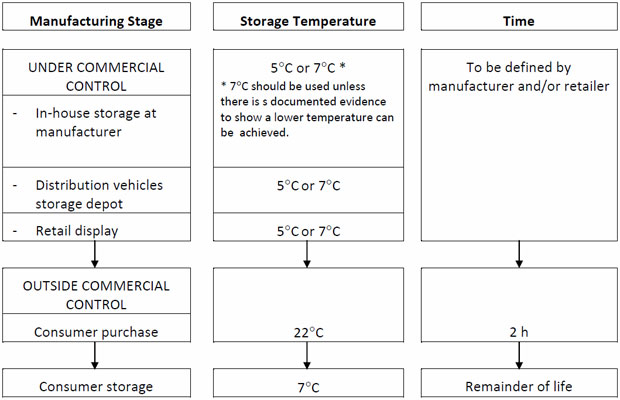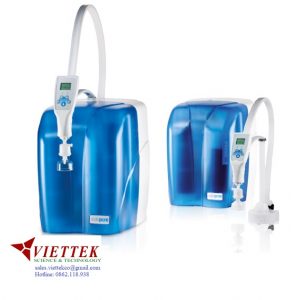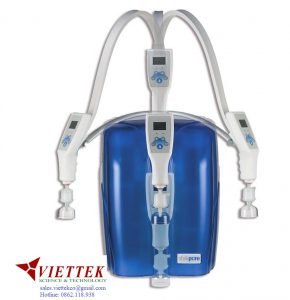Bất cứ sản phẩm nào cũng có giới hạn sử dụng, đặc biệt là các sản phẩm liên quan đến sức khỏe con người. Việc kiểm tra tuổi thọ sản phẩm được rút ngắn với thời gian và chi phí ít hơn do sự phát triển của các ngành khoa học và công nghệ giám định. Các thiết bị như tủ sốc nhiệt, tủ vị khí hậu, và kiến thức tính toán (theo ISO hoặc DIN…) giúp các nhà khoa học, các kiểm định viên, các nhà sản xuất…tiết kiệt được chi phí.

Minh họa tính toán thời gian sống của các loại sữa-Viettekco
Việc tối ưu hóa bằng việc tiến hành thực tế và tính toán tại nhiệt độ và độ ẩm như thế nào để mang lại kết quả chính xác và nhanh nhất.

Khoa Học Công Nghệ Viettek xin giới thiệu tóm lược quy trình test hạn sử dụng cho một số sản phẩm nông nghiệp theo ISO 22000.
SHELF LIFE TESTING PROCEDURE
Guide Lines for Shelf Life Analysis
Distribution:
- Chairman
- General Manager
- Quality Assurance Manager
- Factory Manager – XYZ Factory
- Factory Manager – QUV Factory
- Sales Manager
- R & D Executive
1.0 Objective
To determine whether or not the existing/new products shelf life are conforms or can be extended to planned arrangements, requirements and to food safety management system, and is being effectively implemented and updated continuously.
2.0 Scope
This procedure covers product testing related to shelf life analysis and related to food safety.
3.0 Responsibilities
Overall – General Manager
Direct – R & D Manager
Market Requirements – Sales Manager
Maintain Sample Collection – Factory Manager XYZ/QUV
Expiry Testing/External Lab Testing – Quality Assurance Manager
Maintaining/Updating/Documenting – R & D Executive
Preparation of relevant documents
4.0 Activities
4.1 Product Shelf Life Information
4.1.1 Any shelf life related information (requests, instructions, guidelines, and requirements) shall be communicated timely to R & D Department through General Manager, in written format (RD/MGT/FT/0XX or 0YX). The sales Manageress shall communicate with clients and contractors regarding extended or shortened shelf life.
4.1.2 The Quality Assurance Manager shall communicate with external laboratories/ service providers for shelf life analysis testing.
4.1.3 Product information including intended use, specific storage requirements, shelf life and any other relevant information shall be communicated in due manner. This information may be included in product labels or contracts where appropriate. Approval of the General Manager shall be obtained before issuing any product shelf life related information.
4.1.4 Statutory and regulatory authorities and other organizations including clients/distributors/supermarket chains that may have an interest or impact on shelf life shall be informed as appropriate on issues concerning them. Such communication shall be done by or under the approval of General Manager.
4.1.5 Any inquiries, customer feedback or any other information from supermarket chains, including customers, suppliers and statutory and regulatory authorities regarding shelf life shall be communicated to R & D Manager. Customer complaints and related activities on shelf life also shall be communicated to R & D Manager. All above information and issues shall be documented and communicated.
4.2 Shelf Life Testing
4.2.1 Shelf life is the time period from manufacturing until reaching the “best before date” and best before date names the date until the product remains under the defined quality (quality = set standards) of the food which shall be safe at the best before date (nutritional values, appearances, colour, odour may have changed when reaching the best before date as any food undergoes permanent change during storage).
4.2.2 “Use by date” shall be used with foods that are perishes very easily and has an especially high risk of becoming unsafe due to excessive storage. Spice & condiments with the use by date or best before/expiry date shall not be sold or put into circulation for consumption in anyway after reaching this date.
4.2.3 The shelf life test shall be conducted based on the test parameters such as microbiological, chemical (eg: chemical browning), enzymatic (eg: enzymatic browning), moisture, staling, flavour loss, light induced changes, texture changes, ERH (equilibrium relative humidity) or products with high or low:
Water content
Water activity
Moisture content (free water-liquids and bound water-sugar)
Fat/oil content – rancidity
Alcohol content
Acid content
pH
4.2.4 The products with expected shelf life to be less than one year, real time shelf life tests shall be conducted, where the product shall be monitored for the actual length of its intended shelf life.
4.2.5 If a given product has a long shelf life, then the real time testing is not likely to fit in with product development cycle. In such cases accelerated stability testing shall be used to estimate shelf life; but technical expertise is a necessity.
4.2.6 Thus the products that have an expected shelf life longer than one year shall use accelerated shelf life tests to determine the shelf life. In accelerated stability testing, there shall be different incubation chambers which can be set at different temperature and humidity levels along with various lighting conditions. By introducing stressful conditions to the given product various parameters shall be tested (clause 4.2.3), this method can accelerate testing for product quality and safety.
4.2.7 If necessary, real time testing shall be used to verify estimated best before dates after the product has been launched based on accelerated stability test. Accelerated stability testing typically involves storing products at high temperature/humidity/light intensity or similar conditions. Thus products shall be tested following storage for different times and conditions. For some products, tests other than those used for routine quality control shall be required.
4.2.8 The accelerated stability test shall be conducted in an accredited laboratory by experienced food scientist with the expert knowledge on the subject. This shall summarize the storage trial results and any required microbial growth modeling and challenge tests if necessary. The report shall justify the shelf life estimate.
4.2.9 The calculations to convert the results of testing into an estimated shelf life are complex, thus some products shall require the services of a consulting chemist to evaluate the shelf life.
4.2.10 Expiry testing shall be conducted on retained samples from commercial batches of products which shall be tested for microbiological and chemical quality upon expiry of shelf life.
4.2.11 Newly launched products shall be tested more frequently for expiry test while proven products shall be tested occasionally. Samples for testing shall be stored under realistic rather than ideal temperature conditions. Expiry testing provides further assurance that manufacturing systems are under control.
4.2.12 There shall be reputed sensory analysis results alongside the accelerated shelf life testing which can be selected among Discrimination or difference test (this test is used to answer whether there are any differences between two types of product), Descriptive analysis (this test is used to quantify the perceived intensities of a product’s sensory characteristics and to assess how food products are similar or different from one another), Affective or hedonic test (is used to quantify the degree of preference for a product and how well products are liked or which products are preferred) with preference to descriptive analysis.
4.2.13 The expiry test shall be conducted by the quality assurance department based on their retained products as well as samples collected from the market returns. The results shall be recorded and communicated on due diligence.
4.2.14 If ‘growth – no growth’ of microbes are not clear from other studies then challenge tests can be very useful. Their use shall not be required where it is obvious that either growth won’t occur or growth will occur. Challenge tests shall be used to clarify areas of uncertainty and verify growth models for products with chemical characteristics near to the growth – no growth border.
4.2.15 Challenge test – A challenge test is similar to the microbiological testing used in storage trials mentioned. The difference is that specific different temperature (atmospheric/cold) tolerant pathogens are added to the product prior to packaging which shall not be done inside the manufacturing premises. Storage tests on products, where pathogenic bacteria are only occasionally present are likely to be misleading. The design and evaluation of challenge tests shall be done by an expert food microbiologist.
4.3 Product Development
4.3.1 Product development shall be well advanced before the company can have confidence in shelf life estimates. The company shall be able to reliably produce homogeneous product with consistency from batch to batch.
4.3.2 Physical and chemical factors that impact on the capacity of bacteria to grow, such as pH, water activity and evenness of mix (distribution of moisture, salt, preservative or food acid) shall be well controlled.
4.3.3 The physical, chemical and microbiological profile of several batches of finished product shall be established. The potential for product contamination shall be evaluated. The packaging materials shall be correctly identified.
4.3.4 Company shall establish reliable commercial batch sample storage with a catalogue for each every batch manufactured and collected samples from different batches shall be stored separately while keeping them until expiry date is reached where expiry test shall be conducted. The sample room shall have the limited access to authorized persons.
4.4 Product Stability and Food Safety
4.4.1 Initial studies are likely to consist of storage trials under the recommended storage conditions. Refrigerated storage trials shall be run at 5°C and under conditions of mild temperature abuse equal to what might be encountered in the commercial cold chain.
4.4.2 Products shall be inspected at suitable times and samples tested for stability of the critical physical and chemical characteristics. These trials also provide an opportunity to commence microbiological tests for both spoilage organisms and the cold-tolerant pathogens.
4.4.3 The trials shall continue beyond the targeted shelf life unless the product fails earlier.
4.5 Product Specification
4.5.1 The product specification document shall list the physical, chemical and microbiological characteristics of the product. In some cases document shall specify both manufacture (start of shelf life) and expiry (end of shelf life) criteria.
4.5.2 The specified criteria shall be traceable by formulation/recipe/ lock code to product development records.
4.5.3 Even seemingly minor changes to ingredients, manufacturing procedures, packaging or distribution can have adverse affects on product safety and use by dates. Therefore the shelf life of the revised product shall be verified, for example, by expiry testing of trial batches.
4.5.4 For the same reason, similar precautions shall be taken when applying the same use by date to a family of products with very similar characteristics. For a given product, where growth is least restricted shall be used in the shelf life study.
4.5.5 The specification shall also be correlated with quality assurance test results for manufactured batches.
4.5.6 The specification shall include recommended storage conditions and the shelf life. This shall be traceable to the shelf life study.
4.6 Test Results
4.6.1 The test result shall include the answers to the questions such as:
Does pH change (eg: due to microbial growth or failing buffering systems)?
Is water redistributed within the product (eg: due to syneresis, condensation or a broken emulsion)?
Is the preservative system stable?
Are there any signs of surface growth of microorganisms?
Does any modified atmosphere persist for required times?
Do chemicals migrate from the food contact materials into the food?
Are there any unforeseen changes to the product?
4.6.2 The trials shall lead to an understanding of target levels and ranges for the critical physical and chemical characteristics of the product over the intended shelf life.
4.6.3 The specific test results shall include microbiological, physical and chemical tests results including but shall not limited to (microbial) Total aerobic count, Coli form bacteria/E. coli, Lactic acid bacteria, L. monocytogenes, Salmonella, Staphylococcus aureus, Yeast and mold etc., (physical) Water activity (AW value), Viscosity, Determination of atmosphere inside the packaging (oxygen, nitrogen, CO2-content), Decreasing or increasing pressure inside the packaging, Turbidity etc., and (chemical) Acid value, Free fatty acids, Aldehydes, External moisture, Peroxide value etc.
4.6.4 The worst case or least restrictive values (maximum or minimum as the case may be) of the key chemical characteristics shall be compared to published values to evaluate the opportunity for microbial growth and organoleptic changes.
4.6.5 Shelf life of a given product shall be extended or reduced based on the test results and parameters tested in shelf life analysis.
4.6.6 A series of linked documents and records shall be used to provide objective evidence that “Use by Date”/”Best Before”/”Expiry Date” is reliable.
5.0 References
5.1 Company data base on product keeping quality and market returns
5.2 Company sample collections
5.3 R & D New Product Development Request – RD/MGT/FT/0XX
5.3 R & D Product Improvement Request – RD/MGT/FT/0YX
6.0 Records
6.1 Shelf life analysis reports – RD/MGT/RT/0X0
6.2 Externally available data on shelf life of the concerned products
6.3 Expiry test analysis of company products




/79588918-56a1323e5f9b58b7d0bcf3a1.jpg)


